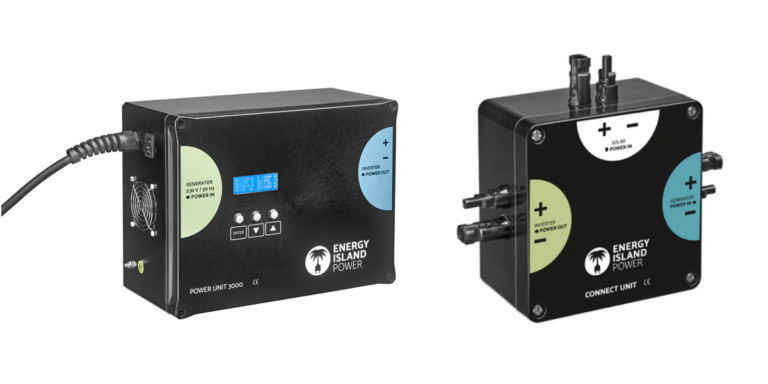Energy Island Power, a German startup, has developed a connecting kit with which owners of electric vehicles can use the electricity of their car to support the energy needs of the home by integrating with the solar converter and the home grid.
After a sunny winter day, an electric vehicle and home battery can be fully charged. However, the storage capacity in the house decreases at night, forcing the operator to remove power from the grid despite unused solar energy. Many EV-owners are looking for bidirectional charging or vehicle-to-home (V2H), but it has not yet become standard.
Nowadays, many EVs can connect to small devices, such as a vacuum cleaner or camping heater, via a 230 V connection. Homeowners can also buy a vehicle-to-load (V2L) adapter to charge their home battery.
To tackle this, the German Startup Energy Island Power developed a connecting kit with which the solar converter can serve as an input for the home grid, which requires synchronization with the schedule. Without the kit, synchronization is not possible when connecting the vehicle via a plug.
In the proposed system, the vehicle or other 230V generator connects to the current unit of the company 3000. This device focuses and converts the electricity to make current voltage (IV) characteristics that are comparable to those of a PV system. The inverter then feeds the power in the home grid or storage system as a single phase or three -phase alternating current. Inverters with emergency power capacity can use the vehicle to bridge extensive power failure.
If the inverter has a free direct current (DC) input, the current unit can be connected. If all inputs are occupied, a connecting unit is added between them, whereby the sunshine on one side and the electricity unit is connected on the other. The system uses MC4 solar connectors and can supply up to 3000 W power.
The intelligence of the system comes from a control unit that is placed between the vehicle and the electricity unit, making the connection possible, depending on the load level of the home storage system. When the level falls under a specified threshold, the vehicle supplies electricity until the storage system is supplemented. The control unit is supplied in two versions.
The energy storage and collection process includes losses. Nils Varchmin or Energy Island Power estimates a loss of 20% of the solar converter to the vehicle and back. However, the solution is easy to install without changes in the home system.
After extensive laboratory tests, the solution will be launched in the second quarter and will be available on the company’s website. The cost -effectiveness of the connecting kit depends on the announced price for the end customer and the amount of electricity that is usually drawn from the vehicle.
This content is protected by copyright and may not be reused. If you want to work with us and reuse part of our content, please contact: editors@pv-magazine.com.


